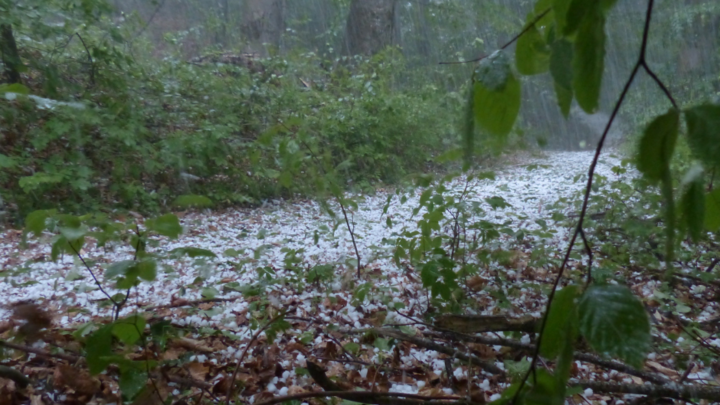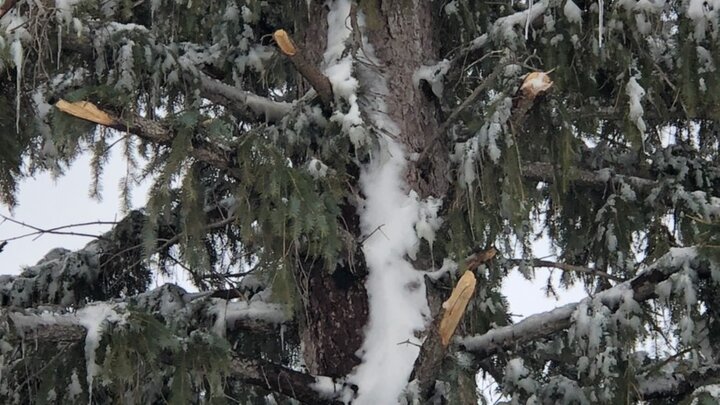Hailstorms are a dangerous reality for Nebraska communities that seem to occur with increasing frequency and intensity. They usually happen in spring and summer and are often accompanied by strong wind, both of which can pose a risk to the health of your landscape plants. Trees and shrubs can be quite resilient in these events due to the strong wood and bark they grow for protection and stability, but they can still take damage that varies with the severity of the storm. Here are some points to consider if you see hailstorm damage on your trees and shrubs.
- The most significant impact from hailstorms is from injury to the live tissue (called the vascular cambium) directly beneath the bark as hail smashes against the branches. Larger hail particles will, naturally, cause larger wounds that take more energy to respond to. If the storm includes high winds, you will see most of the damage on the side of the tree that faces the storm front. (picture)
- Trees will respond to damage to the branches with new wood over time. This response is slow and will depend on the health of the tree before the storm. Give your trees time to show you how they are responding to damage before making any big decisions about removal or heavy pruning.
- Hail will also cause damage to tree leaves, but most healthy trees will grow new leaves in response, as needed. Deciduous trees have adapted to losing their leaves each year in the fall, so growing a second set of leaves is only a minor stress and drain of its resources. (*Discussion of sap ooze/wound dressings for elms/oaks?)
- Springtime is when conditions are best for fungal infections to begin, so spring hailstorms can encourage some types of disease or create a pathway for infection where wounding occurs.
The best thing you can do for your trees after the storm is minimize additional stress as they address the damage. Water them during extended dry periods. Mulch them with 2-3 inches of hardwood mulch (out to the dripline or as wide as you can). Avoid fertilizing your trees unless they have a nutrient deficiency that needs to be addressed.
- Consult an NAA or ISA certified arborist for advice on what else might help your trees, particularly if there are broken branches to be taken out that are large, high off the ground, or near power lines.
- If you have more questions, reach out to your Eastern Community Forester, Western Forest Health Specialist, or your county Extension office.
- Eastern Nebraska - Graham Herbst 402.444.7875 gherbst2@unl.edu
- Western Nebraska Forest Health Specialist- Lauren Keefe 531.280.8758 lkeefe2@unl.edu




